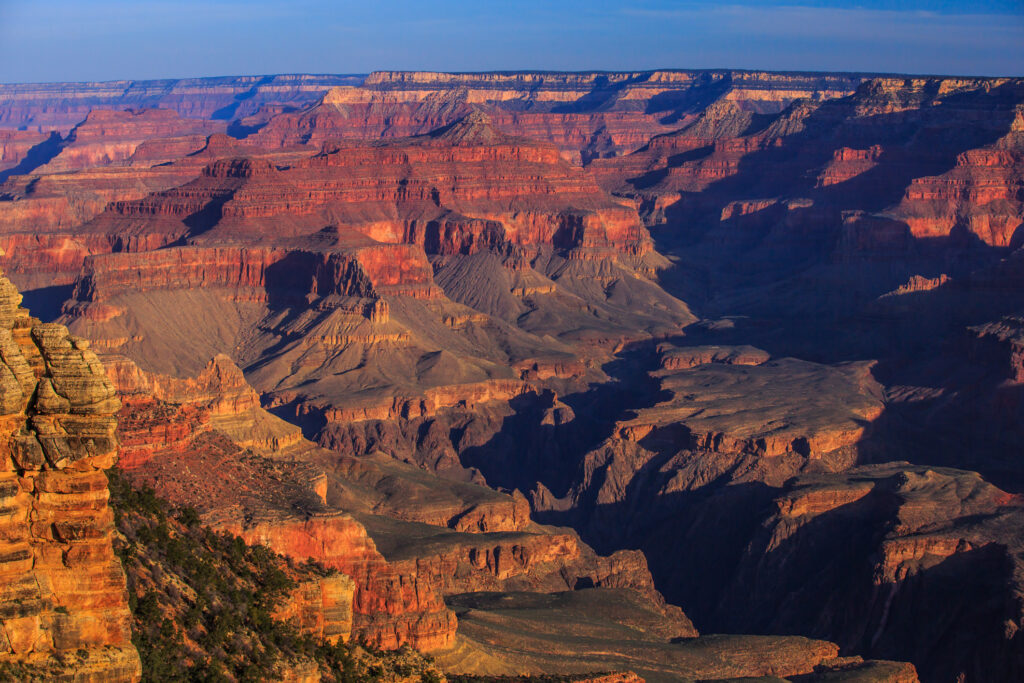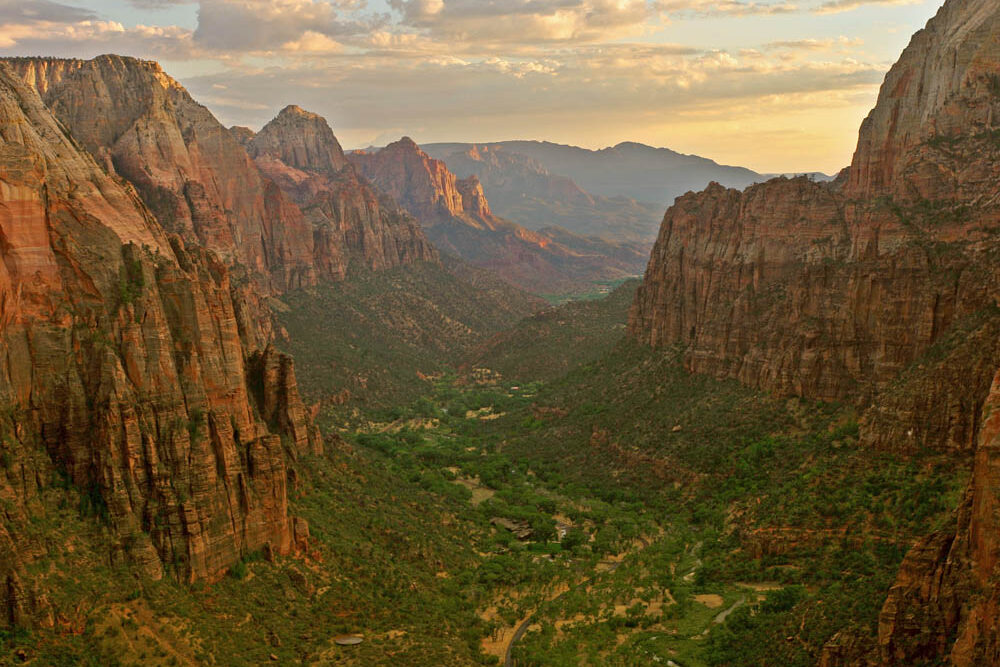1. Yellowstone National Park

Yellowstone National Park, spanning across Wyoming, Montana, and Idaho, is home to one of the most diverse ecosystems in North America. It is famous for its geysers, hot springs, and stunning landscapes, but it is also one of the most dangerous places for pets. The park is inhabited by a wide range of large predators, including grizzly bears, black bears, gray wolves, and even aggressive bison. While these animals typically avoid human contact, dogs can trigger defensive reactions. A barking or overly curious dog may provoke an attack from a protective mother bear or a territorial wolf pack. In 2021 alone, multiple reports surfaced of pet-related wildlife incidents in Yellowstone, reinforcing the risks of bringing dogs into predator-heavy regions.
Beyond its wildlife dangers, Yellowstone’s geothermal areas pose an extreme threat. According to the National Park Service, the ground around geysers and hot springs can be deceptively thin, causing animals and humans to fall through, sometimes resulting in fatal burns. In recent years, tragic incidents have occurred where off-leash pets ventured too close to boiling hot springs and suffered severe injuries or death. Veterinarians urge pet owners to keep their animals on a short, non-retractable leash, avoid wildlife-heavy areas, and never allow pets near thermal features. Carrying bear spray and staying on designated trails can also help prevent dangerous encounters.
2. Everglades National Park

Everglades National Park in Florida is a vast subtropical wilderness filled with lush wetlands, mangroves, and an abundance of wildlife. While it may seem like an exciting place to bring a pet, the park is home to several deadly animals, making it one of the riskiest locations for dogs. The most obvious threat comes from alligators, which are known to lurk in the water, waiting for unsuspecting prey. According to the Everglade Foundation, many dogs, being naturally curious, will approach the water’s edge, where an alligator can strike in the blink of an eye. There have been numerous cases of dogs being snatched by alligators, even in areas that appear safe.
Apart from alligators, Everglades National Park is home to venomous snakes, including cottonmouths (water moccasins), rattlesnakes, and coral snakes. A single bite from one of these snakes can be fatal if left untreated. Additionally, the warm and humid climate creates the perfect breeding ground for mosquitoes carrying heartworm disease, a potentially deadly condition for dogs. Fleas and ticks also thrive in the Everglades, increasing the risk of diseases like Lyme disease and ehrlichiosis. Veterinarians recommend pet owners use preventatives for fleas, ticks, and heartworms before visiting and avoid letting their pets roam freely near water or dense brush.
3. Great Smoky Mountains National Park

Straddling the border of Tennessee and North Carolina, Great Smoky Mountains National Park is one of the most visited national parks in the United States. While its misty mountains and scenic trails make it a popular destination, it is also home to a dense population of black bears, making it risky for pets. According to the National Park Service, black bears may seem less aggressive than grizzlies, but they can be extremely dangerous, especially if they feel threatened or if they associate humans and pets with food. A dog’s barking can startle a bear, potentially leading to a chase or an attack.
In addition to black bears, the park has a high concentration of venomous snakes, including copperheads and timber rattlesnakes. These snakes blend in with the forest floor, making them difficult to spot. Dogs, often curious by nature, may sniff around in leaves or under rocks, increasing their risk of getting bitten. A venomous snake bite can cause swelling, severe pain, and difficulty breathing, requiring immediate emergency care. Veterinarians stress the importance of keeping pets on a short leash, avoiding dense vegetation, and carrying a pet first aid kit that includes snakebite treatment supplies.
4. Grand Canyon National Park: Extreme Heat and Predatory Birds

Grand Canyon National Park in Arizona is one of the most iconic landscapes in the world, but it is also one of the most treacherous for pets. The most immediate danger is the extreme heat, which can lead to dehydration, heat exhaustion, and even fatal heatstroke. According to the National Park Service, during the summer months, temperatures on exposed trails can exceed 110°F, making it nearly impossible for pets to walk safely. The rocky terrain also absorbs heat, and dogs can burn their paw pads within minutes of walking on the hot ground.
A lesser-known danger in the Grand Canyon comes from predatory birds, including golden eagles and California condors. These large birds have powerful talons and sharp beaks, and they have been known to attack small animals. In some rare cases, pet owners have reported seeing eagles attempting to snatch small dogs. To mitigate risks, veterinarians suggest pet owners avoid bringing dogs to the canyon during peak heat hours, provide constant hydration, and use protective booties to shield their paws from the scorching ground.
5. Denali National Park—Wolves and Extreme Cold

Denali National Park in Alaska is one of the most pristine wilderness areas in the United States, but it also poses extreme dangers to pets. One of the biggest threats comes from wild wolves, which roam freely throughout the park. While wolves generally avoid human activity, they may see a domestic dog as a potential rival or prey. According to WolfWatcher, there have been documented incidents of wolves attacking pets, sometimes even when they were leashed.
Beyond the risk of predators, Denali’s harsh climate is another serious concern. The park experiences subzero temperatures for much of the year, and unprepared pets can quickly succumb to frostbite or hypothermia. Even during summer, temperatures can drop suddenly, and snowstorms can occur without warning. Veterinarians strongly discourage bringing pets to Denali, but if owners choose to do so, they must ensure their animals are properly insulated against the cold and are always kept close.
6. Rocky Mountain National Park—Mountain Lions and Altitude Sickness

Rocky Mountain National Park in Colorado is a stunning alpine wilderness known for its towering peaks, crystal-clear lakes, and dense forests. However, it is also home to mountain lions, one of the most elusive but dangerous predators in North America. Mountain lions are stealthy hunters, and while attacks on humans are rare, they see small pets as easy prey. A dog roaming off-leash could attract the attention of a mountain lion, which may stalk it before attacking. Even a large dog is not safe, as mountain lions are powerful enough to take down prey much bigger than themselves.
Another major danger in Rocky Mountain National Park is the high altitude. Many pets, especially those unaccustomed to elevation, can suffer from altitude sickness. Symptoms include shortness of breath, excessive panting, vomiting, and confusion. The combination of thin air and increased exertion can cause dogs to collapse, and in severe cases, altitude sickness can be fatal. Veterinarians recommend acclimating pets gradually to higher altitudes, bringing plenty of water, and limiting strenuous activity in the park.
7. Zion National Park: Flash Floods and Heatstroke

Zion National Park in Utah is known for its dramatic red cliffs, narrow slot canyons, and scenic hiking trails. However, this desert landscape presents significant dangers for pets. The park is prone to extreme heat, especially in the summer, where temperatures can soar above 100°F. Dogs can quickly suffer from heat exhaustion, which can escalate to heatstroke, a life-threatening condition. The rocky terrain also heats up quickly, burning dogs’ paw pads and making it difficult for them to walk safely.
Another hazard in Zion is the risk of flash floods. The park’s slot canyons can funnel water rapidly, turning a dry path into a deadly rushing river in a matter of minutes. Dogs and other small animals are especially vulnerable in these situations, as they can be swept away before an owner has time to react. To keep pets safe, veterinarians recommend avoiding hikes during peak heat hours, bringing cooling vests and booties for protection, and checking weather conditions for potential flash flood warnings before setting out.
8. Yosemite National Park—Coyotes and Dangerous Waterfalls

Yosemite National Park in California is famous for its towering granite cliffs, breathtaking waterfalls, and ancient sequoia trees. However, it is also a hotspot for wildlife, including coyotes, which are known to prey on small pets. Coyotes are bold and often approach campgrounds and picnic areas, searching for food. Dogs that wander too far from their owners may become targets, as coyotes have been known to attack even medium-sized breeds.
Yosemite’s waterfalls and rivers also pose a major risk to pets. Many of the park’s trails pass near fast-moving water, and the strong currents can be deadly for animals. Dogs that get too close to the edge of a river or waterfall can slip and be carried away. Several pet-related drownings have been reported in the park over the years. Veterinarians urge pet owners to keep their animals on a secure leash, avoid letting them near moving water, and be vigilant about wildlife encounters.
9. Glacier National Park

Glacier National Park in Montana is one of the most stunning yet hazardous national parks for pets. The park is home to one of the largest populations of grizzly bears in the U.S., and encounters are not uncommon. Unlike black bears, grizzlies are much more aggressive and unpredictable. A startled or threatened grizzly can attack a dog instantly, often with fatal consequences. Even if a dog is leashed, its barking or movement can trigger an aggressive response from a bear.
The park’s freezing lakes and rivers also pose risks. Even in summer, the water temperature can be close to freezing, and a dog that jumps in could suffer from hypothermia within minutes. Strong currents in glacial rivers make it difficult for even the strongest swimmers to stay afloat. Veterinarians strongly advise against bringing pets into bear-heavy areas and recommend avoiding all water activities with pets in Glacier National Park.
10. Death Valley National Park

Death Valley National Park in California is one of the hottest places on Earth, with summer temperatures frequently exceeding 120°F. This environment is incredibly dangerous for pets, as the extreme heat can cause heatstroke, dehydration, and severe paw burns. Even in cooler months, the dry desert air can lead to rapid dehydration, putting pets at risk of overheating.
Another hidden danger in Death Valley is the presence of scorpions and venomous spiders. Pets that dig or sniff under rocks may get stung or bitten, which can cause painful swelling, paralysis, or even death. Veterinarians advise against bringing pets to Death Valley in the summer, and if visiting in the winter, to keep them on a leash and out of areas where dangerous insects may be hiding.
11. Big Bend National Park

Big Bend National Park in Texas is a rugged and remote desert wilderness, home to a variety of wildlife, including mountain lions, bobcats, and rattlesnakes. Mountain lions are the biggest threat to pets, as they roam the rocky terrain and have been known to stalk dogs that venture too far from their owners. Unlike some other predators, mountain lions are silent hunters and can attack before a pet even realizes it is in danger. Park officials warn that off-leash dogs are especially vulnerable, as their movements can trigger a predatory response.
Another hidden hazard in Big Bend comes from the plant life. The park is full of prickly pear cacti, agaves, and other spiny desert plants that can easily get embedded in a pet’s paws, mouth, or skin. Dogs that run through the desert terrain may end up with painful punctures, which can lead to infections if not treated properly. Veterinarians recommend carrying a pet first aid kit with tweezers for removing spines, keeping dogs on a leash to prevent them from running into dangerous plants, and staying on marked trails to minimize risks.
12. Olympic National Park

Olympic National Park in Washington is a diverse landscape of rainforests, mountains, and coastal beaches. While it may seem like an ideal place to take a pet, the park is home to an unexpected danger—an aggressive Roosevelt elk. These large animals, especially males during the rutting season (fall), can become extremely territorial and will charge at anything they perceive as a threat. Dogs, which resemble natural predators like wolves, are particularly likely to provoke an aggressive response. Even a single kick or charge from an elk can cause severe injuries or death.
Another hidden risk in Olympic National Park comes from the region’s damp climate, which promotes the growth of toxic mushrooms. Some species, like the deadly Amanita, are highly poisonous to dogs and can cause severe liver failure or death if ingested. Because mushrooms can be difficult to distinguish from harmless ones, veterinarians warn pet owners to prevent their animals from sniffing or eating anything off the ground. Keeping pets on a short leash, avoiding dense forest floors, and bringing a muzzle for dogs prone to eating random objects can help prevent accidental poisoning.
13. Acadia National Park: Rugged Cliffs and Tick-Borne Diseases

Acadia National Park in Maine is known for its breathtaking coastal cliffs, rocky shorelines, and dense forests. While it offers spectacular views, its rugged terrain presents significant dangers for pets. Many of the park’s trails wind along steep cliffs, and a single misstep can result in a fatal fall. Dogs, especially those prone to chasing wildlife or exploring new scents, may unintentionally run too close to the edge. Every year, reports surface of pets and even humans slipping off cliffs while hiking in Acadia.
In addition to the risk of falls, Acadia is a hotspot for tick-borne diseases. The park is home to high populations of black-legged ticks, which carry Lyme disease, anaplasmosis, and other harmful infections. Dogs that walk through grassy or wooded areas are at high risk of picking up ticks, which can burrow into their skin and transmit diseases within hours. Veterinarians strongly recommend applying tick prevention before visiting Acadia, checking pets thoroughly for ticks after hikes, and keeping them on designated trails to reduce exposure.


